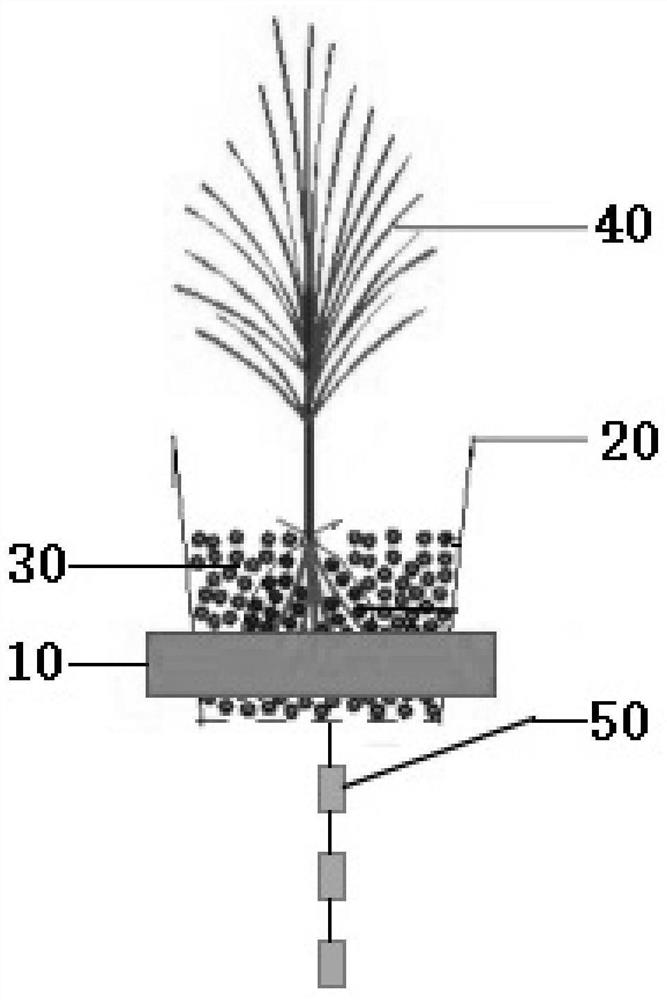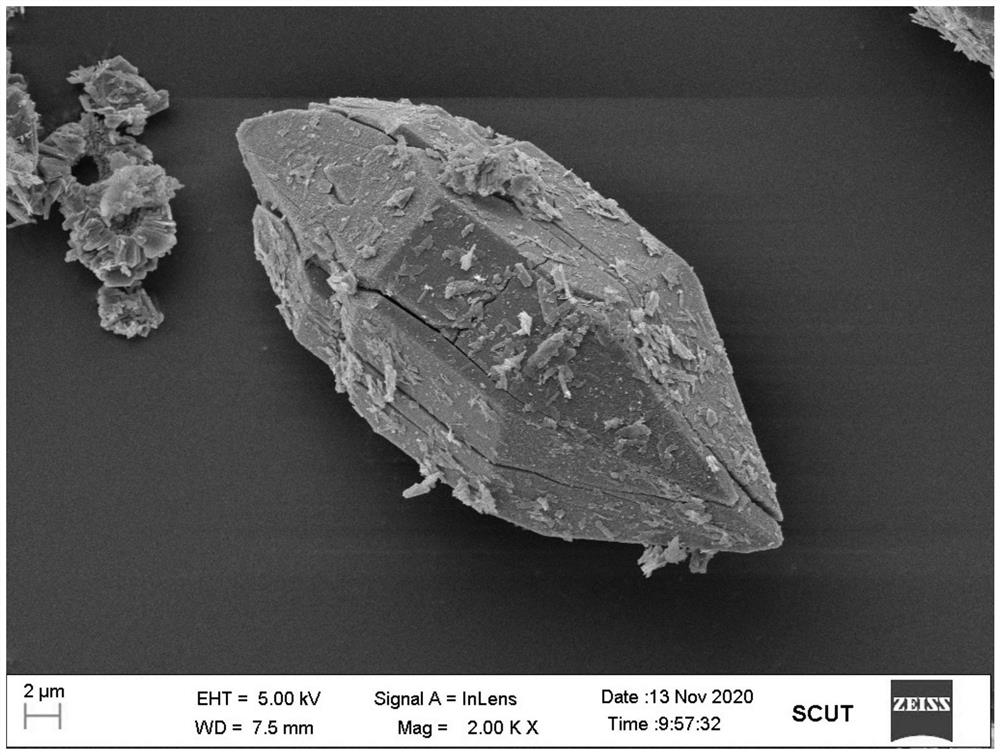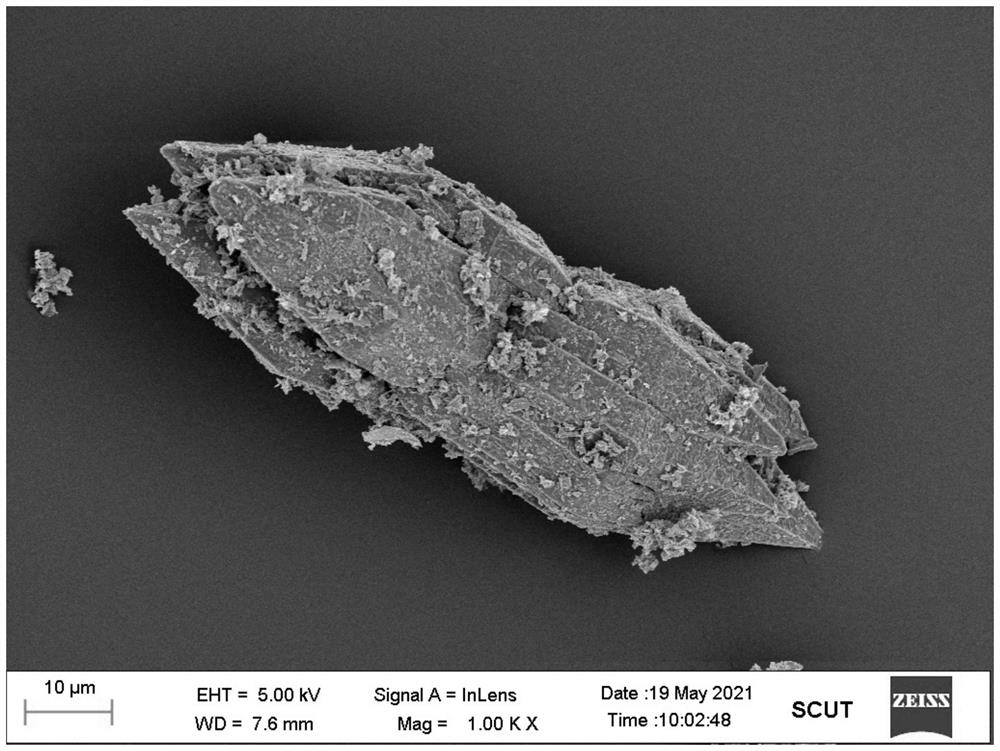Ecological floating bed based on molecularly imprinted material and application of ecological floating bed in targeted degradation of emerging pollutants in polluted water
A molecular imprinting, ecological floating bed technology, applied in water pollutants, biological water/sewage treatment, water/sludge/sewage treatment, etc., can solve the problems of non-selectivity of free radicals, influence of MOFs structure, long mass transfer distance, etc. , to achieve good application prospects, high catalytic performance and water stability, and the effect of reducing the odor threshold
- Summary
- Abstract
- Description
- Claims
- Application Information
AI Technical Summary
Problems solved by technology
Method used
Image
Examples
Embodiment 1
[0059] An ecological floating bed based on molecularly imprinted materials (the schematic diagram of the structure is shown in figure 1 shown), its composition structure includes a floating plate 10, several bottom ends pass through the holes on the floating plate 10 and are fixed in the hollowed out planting basket 20 in the hole, the cultivation matrix 30 arranged in the hollowed out planting basket 20, the cultivation matrix 30 planted in the cultivation medium Emergent plants 40 in 30 and several biological ropes 50 connected to the bottom of the hollow planting basket 20 at one end; the composition of the cultivation substrate 30 includes ceramsite, activated sludge and molecularly imprinted materials; the emergent plants 40 are parasols Grass.
[0060] The preparation method of the above-mentioned ecological floating bed based on molecularly imprinted materials comprises the following steps:
[0061] 1) Preparation of molecularly imprinted materials:
[0062] a) 1.67mm...
Embodiment 2
[0078] Effects of different emergent plants on SMZ removal in river water:
[0079] Emergent plants such as Cymbidium, Vetiver, Papyrus and Calamus were used to prepare ecological floating beds based on molecularly imprinted materials. The preparation method was exactly the same as that in Example 1, and the river water (taken from Dashan Dongyong, Panyu District, Guangzhou City) was selected. ) to test the removal effect of different emergent plants on SMZ in river water. Sodium persulfate was added to the river water according to the molar ratio of sodium persulfate and molecularly imprinted material 600:1. Since the SMZ content in the river water was only 224ng / L, the content was very high. Low, in order to facilitate detection, add 0.5mg / L of SMZ to the river water, so that the content of SMZ becomes 1.000224mg / L, the operating cycle of the ecological floating bed is 4h, respectively at 0.5h, 1h, 1.5h, 2h, Water samples were taken at 3h and 4h for testing, and the removal ...
Embodiment 3
[0084] The influence of different materials on the removal effect of SMZ in river water:
[0085] With reference to the operation of embodiment 1, respectively use MIL (Fe), NH 2 -MIL(Fe), NH 2 -MIL(Fe,Cu), NH in Example 1 2 -MIL (Fe, Cu, Mn), C-Fe-Nx in Example 1 and MIP@C-Fe-NXs in Example 1 to prepare an ecological floating bed (and set a blank control without adding any of the above Material), then with reference to the test method test of embodiment 2, the removal rate of SMZ in river water when adopting different materials, test result is shown in the following table:
[0086] Table 3 Removal rate of SMZ in river water when using different materials
[0087]
[0088]
[0089] Note:
[0090] Preparation of MIL(Fe): 5mmol of FeCl2 4H 2 O and 5mmol of terephthalic acid were dispersed in 40mL of N,N-dimethylamide (DMF), then 2mL of methanol and 1mL of hydrofluoric acid were added, mixed evenly, and then the mixed solution was transferred to a volume of 100mL polyt...
PUM
| Property | Measurement | Unit |
|---|---|---|
| Particle size | aaaaa | aaaaa |
Abstract
Description
Claims
Application Information
 Login to View More
Login to View More - R&D
- Intellectual Property
- Life Sciences
- Materials
- Tech Scout
- Unparalleled Data Quality
- Higher Quality Content
- 60% Fewer Hallucinations
Browse by: Latest US Patents, China's latest patents, Technical Efficacy Thesaurus, Application Domain, Technology Topic, Popular Technical Reports.
© 2025 PatSnap. All rights reserved.Legal|Privacy policy|Modern Slavery Act Transparency Statement|Sitemap|About US| Contact US: help@patsnap.com



